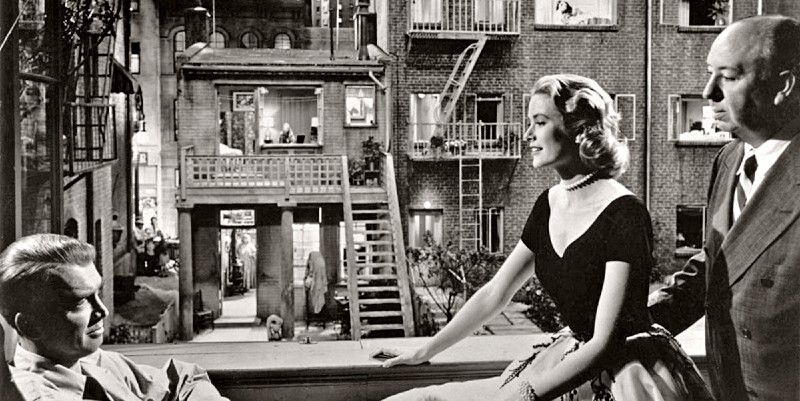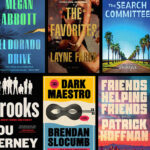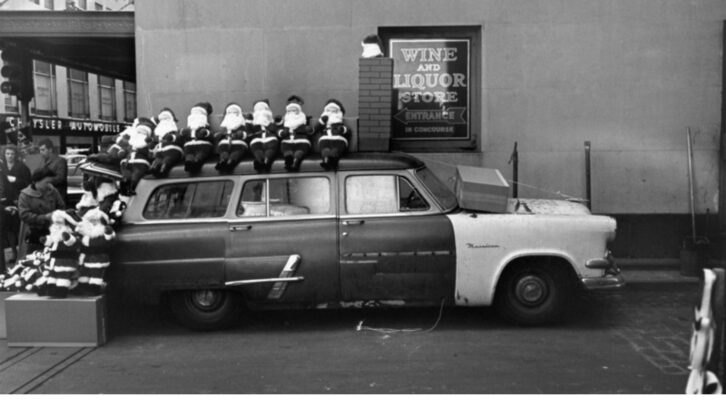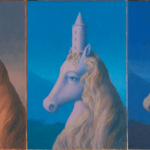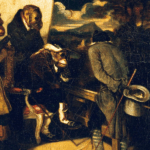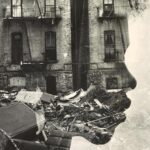Cornell Woolrich occupies a singular place in American crime fiction—a writer whose work, suffused with paranoia, fatalism, and longing, defined much of the mood and atmosphere of mid-twentieth-century noir. Though he was never as publicly celebrated as Chandler or Hammett, Woolrich’s stories provided the narrative DNA for some of Hollywood’s greatest thrillers. Chief among them is Rear Window, Alfred Hitchcock’s 1954 masterpiece, based on Woolrich’s 1942 short story “It Had to Be Murder.” To understand how Woolrich came to write that story is to understand the deeply private, claustrophobic world from which all his fiction emerged.
Cornell George Hopley-Woolrich was born in 1903 in New York City to an American father and a Mexican mother. His childhood was divided between Mexico and the United States, marked by instability and emotional estrangement. After his parents’ separation, Woolrich spent much of his youth moving between countries and households, never, he said later, developing deep friendships or forming lasting roots. This sense of impermanence—of being a perpetual outsider—would later become a defining feature of his fiction.
He attended Columbia University, where he began writing stories modeled on the lush romanticism of F. Scott Fitzgerald. His first novel, Cover Charge (1926), was a Jazz Age melodrama published when he was still an undergraduate. But the Depression changed both the market and Woolrich’s imagination. As his early style fell out of favor, and as his own life grew more inward and secretive, he turned toward the darker territory of suspense and psychological horror. The trope of Woolrich as self hating gay man has been done to death and explored extensively elsewhere, what’s interesting to me however about this period is his productivity, work ethic and success. By the mid-1930s, he was publishing prolifically in pulp magazines such as Detective Fiction Weekly and Black Mask.
What set Woolrich’s stories apart was often not the tough-guy dialogue or gunplay, but a mood of dread and helplessness. His protagonists were ordinary people caught in traps—sometimes of circumstance, often of their own making. His stories unfolded in small, oppressive spaces: hotel rooms, darkened city streets, cramped apartments. It was a world both external and internal, where guilt, fear, and obsession narrowed life to a single, feverish focus. He prefigured the work of Jim Thompson who would become the master of the cramped room and botched small time heist.
By the late 1930s, Woolrich had sold a dozen of his stories to Hollywood but he was still living with his ailing mother on the top floor of the Hotel Marseilles, on 103rd and Broadway, an increasingly unfashionable hotel in a part of Manhattan that was also rapidly losing its luster. Woolrich and his mother would share the apartment for nearly twenty-five years, until her death in 1957. He wrote his stories at a typewriter in his bedroom facing Broadway, often at night, surrounded by silence. This life of isolation and dependency would later become a recurring motif in his fiction—the watcher, the shut-in, the person trapped in their own interior world.
I found my way into Woolrich’s world during research on a piece about William Burroughs who also lived in the Marseilles for a time and may have used it as some of the many flops he fictionalized in Junky and Naked Lunch. There is a bench outside the Marseilles in the Broadway island that Burroughs describes nodding out on in a heroin stupor. It’s delicious to imagine that while Burroughs was on heroin, Woolrich was on the other side of the bench sipping from a flask, taking a break from mother.
“It Had to Be Murder,” published in Dime Detective Magazine in February 1942, grew directly from the atmosphere of the Marseilles Hotel. The story’s premise is deceptively simple: a man confined to his apartment, immobilized by a broken leg, begins observing his neighbors across the courtyard. With nothing else to occupy his time, he notices small, unsettling details that lead him to suspect one of them of murder. The suspense arises from confinement itself—from seeing without being seen, from the impotence of the observer who cannot act.
It’s perhaps too much of exaggeration to say that Woolrich’s world was Rear Window World—an interior prison where life outside could only be glimpsed, imagined, or feared; but the story did distill his lifelong themes: loneliness, suspicion, the fragility of perception, and the lurking sense that danger is always closer than it seems.
When Alfred Hitchcock adapted Woolrich’s story into Rear Window (1954), he recognized in it the perfect framework for his own cinematic obsessions—control, spectatorship, and guilt. Hitchcock expanded Woolrich’s terse, pulpy narrative into a richly layered exploration of looking itself: the ethics of observation, the relationship between watcher and watched, the tension between intimacy and intrusion. Two gods of Hollywood, Jimmy Stewart and Grace Kelly, looking down on the little people. The story’s core—its sense of confinement and psychological tension—remains wholly Woolrich’s.
Rear Window takes place in bustling Greenwich Village not a gloomy uptown hotel going to seed. For the movie production Hitchcock built a six story set on the Paramount Lot. It measured approximately 100 feet wide and 185 feet long, with buildings up to 50 feet high. A dozen of the apartments had electricity and running water.
Hitchcock reportedly said that Rear Window was “pure cinema,” but it is also pure Woolrich. I live only two blocks from the Marseilles, which is now a nursing home, and as my interest switched from Burroughs to Woolrich for a while I became obsessed by the idea that Woolrich could see into my building from his top floor apartment. I wondered who I would be in Woolrich’s story? Victim? Murderer? Failing writer? Schlemiel? All of the above? I decided to go to the Marseilles and explain that I was working on an essay about Woolrich and would it be at all possible to see into his old flat?
To cut a long story short, it was possible, but only because one of the top floor apartments was being renovated. I was escorted into what I think might possibly have been Woolrich’s apartment and found myself in a cramped place filled with building materials, paint and furniture. I dragged a chair to a window, looked out on Broadway and found that I could not possibly see into my apartment building two blocks further south. The view in fact is not remotely as interesting as Jimmy Stewart’s view in Rear Window. Broadway is too wide and expansive and the buildings too distant to see anything at all really. Woolrich hadn’t used real life, he had used his imagination.
I took out my notebook and sat by the window for a few minutes and began writing something. I wasn’t sure what it was, exactly, but it wasn’t a piece about Burroughs or Woolrich.
It turned out be a short story that takes place in the Rear Window universe entirely from the POV of the murderer, Lars Thorwald, who in my telling, is a sort of innocent man. The story is called, ahem, “The Other Side of the Window” and is published in the November/December 2025 issue of Alfred Hitchcock’s Mystery Magazine.
The frisson of entering the physical space of Woolrich’s world and then getting to write something about it was, for me, the best kind of thrill, the thrill of literary osmosis, where the place itself, perhaps still leaking magic becomes a palimpsest. It’s a nerdy thrill, I admit, and definitely not as cool as flying bombers in World War 2 or watching your girlfriend in her Chanel dress break into a murderer’s apartment and risk everything to prove that in one of those private worlds that Woolrich and Stewart and Hitchcock were dreaming about something terrible was being done.

